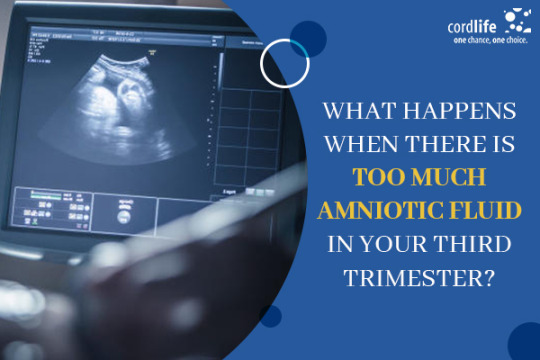#mild polyhydramnios third trimester
Explore tagged Tumblr posts
Text
What to Know About the Different Conditions of Polyhydramnios?

Polyhydramnios, or hydramnios, alludes to an intemperate measure of amniotic liquid around the hatchling in the uterus. The embryo's kidneys produce the amniotic liquid, which streams into the belly through the baby's pee. The hatchling at that point swallows the liquid and reabsorbs it with its breathing movements. This demonstration of gulping helps balance the measure of amniotic liquid in the belly. This procedure keeps up a dynamic harmony between the generation and ingestion of amniotic liquid. Make sure that you have all the proper information related to polyhydramnios third trimester.
Signs and indications
Ladies with polyhydramnios regularly have no signs or side effects. At the point when side effects do happen, they can incorporate trouble breathing, untimely compressions, or, if polyhydramnios is extreme, torment in the guts.
At the point when the uterus is bigger than anticipated for the hatchling's age, this could demonstrate that there is a lot of amniotic liquid. A lady can ordinarily tell that her paunch is becoming in all respects rapidly.
Causes
· Maternal diabetes, which specialists likewise allude to as gestational diabetes
· The embryo experiencing issues gulping the amniotic liquid
· Congenital mutations, for example, a blockage of the baby's gastrointestinal or urinary tract, or a strange improvement of the cerebrum and spinal string
· Anemia, or basically which is much popularly known as the absence of red platelets, in the embryo
· At times, a specialist may discover no reason for polyhydramnios. In these cases, they would depict the reason as idiopathic. Have all the information from your doctor related to the mild polyhydramnios third trimester.
Proper diagnosis
Specialists analyze polyhydramnios before the child is conceived. To make an analysis, they will play out an ultrasound examination. Utilizing ultrasound waves, they measure the measure of amniotic liquid in the belly and search for any fetal irregularities.
· Blood tests to check for maternal diabetes or contamination
· A a technique called amniocentesis, in which a specialist gathers an example of amniotic liquid from the belly and sends it to a research center for hereditary investigation
Treatment
To treat polyhydramnios, specialists endeavor to decrease the measure of amniotic liquid in the belly. This can draw out the pregnancy and improve the lady's prosperity. A specialist may utilize one of the accompanying techniques to lessen the volume of liquid:
· Reduction amniocentesis likewise called amnioreduction which is a system where specialists draw liquid from the belly. In any case, the medicinal network has not yet achieved an understanding about how much liquid to evacuate or how rapidly to pull back it.
· Medications could incorporate prostaglandin synthesize inhibitors or sulindac, which is a no steroidal calming drug. Polyhydramnios can build the danger of complexities, so specialists as a rule screen the embryo cautiously, starting at 32 weeks of pregnancy.
Polyhydramnios is the restorative term for having an excessive amount of amniotic liquid in the belly. It has a few potential causes, including maternal diabetes, numerous pregnancies, or variations from the norm in the embryo. The condition can likewise cause inconveniences for the embryo, including anatomical issues, malposition, and, in extreme cases, passing.
0 notes
Text
What Happens When There Is Too Much Amniotic Fluid in Your Third Trimester?

During pregnancy, excessive amniotic fluid in the uterus is known as polyhydramnios. This usually happens in the late second or third trimester. Only 1-2% of pregnancies get affected by polyhydramnios. If you develop this condition, your doctor will monitor your pregnancy more closely. If your doctor feels that there is a risk to you or the baby, they may ask you to get admitted to the hospital. In extreme cases, your doctor may perform a C-section to deliver the baby.
Effect of Polyhydramnios
Most polyhydramnios cases are mild and do not involve any risk. In severe cases, it can affect your pregnancy in the following ways:
Can cause shortness of breath
Too much amniotic fluid is linked to an increased risk of stillbirth. The ratio of stillbirth with excessive amniotic fluid is 4:1000. In normal pregnancies, the risk of stillbirth is 2:1000
Increases the risk of premature rupture of the membrane
Can induce preterm labor
Too much amniotic fluid makes it easier for the baby to float around. This may cause the baby to keep floating and not take the normal birthing position. Polyhydramnios increases the chances of transverse or breech position during delivery
The umbilical cord can get pinched or pushed out. In such a situation, the umbilical cord can get pushed out before the baby does. This is a dangerous situation
Increases the risk of placental abruption
Increases the risk of postpartum haemorrhage
Can cause premature contraction, longer labor, and early breaking of water
In extreme cases, it can cause congenital abnormalities
Diagnosis and Treatment
Polyhydramnios is diagnosed through ultrasound testing. Mild to moderate polyhydramnios require no additional treatment. Your doctor will keep monitoring your condition regularly. In some cases, your doctor may drain out the excess fluid using the procedure called amnioreduction.
If they find that the baby is in breech or transverse position, or if they diagnose premature rupture, they may ask you to go for a C-section delivery.
0 notes
Text
Is there a cause of concern if you have high amniotic fluid during pregnancy?

Shorter women lack extra space in their torsos which could force the babies straight out. Yes you could feel a lot better. Polyhydramnios in third trimester is a medical term that is associated during pregnancy. This connotes a medical condition where a woman has immense amniotic fluid in their stomach. When you are part of routine ultrasound during pregnancy there are a couple of ways by which you can measure high amniotic fluid in third trimester. First you measure amniotic fluid in various pockets and second are to figure out the fluid within your uterus.
Though the range is dependent on how far you are in pregnancy, as fluid levels are expected to increase during your third trimester and then fall down. The best part is that higher levels of amniotic fluid are known to emerge in rare pregnancies.
The causes?
Anticipated levels of amniotic acid occurs if
If you have any infection or a history of genetic disorders
Multiples of twins
If you are carrying multiples or twins
The definite cause of worry is fetal issues but they are not that common. When it is a mild version there is no definite cause. Just you have to keep in mind that when you undertake an ultrasound 100 % diagnosis could not be possible. But doctors do point to occurrence of preterm delivery and an increased risk in terms of admission to a NICU unit. In some cases the fluid levels are known to subsidize normally. But still your doctor keeps a check on the fluid levels to make it a point that the baby is being managed in a proper way.
The risks
Risks depend upon the stage of pregnancy along with severity of your condition. The more severe it appears to be higher chances of complications that can arise during delivery. Some of the possible risks include
Breech birth where you are going to have more fluid which makes it difficult for a baby to get head down
Bleeding complications could arise after the time of birth
Placenta disruption might occur, where from the uterine wall the placenta separates which occurs before the time of delivery
How it can be diagnosed and treated?
If the doctor suspects such disorders, first and foremost they are going to recommend additional testing to verify nothing seems to be wrong with your little one. Mild levels would not need any major treatment with mere monitoring would suffice. In severe cases you might need treatment. This would mean medication as well as draining of excess amniotic fluid. More testing would be called for and sometimes if a baby is too big the doctor may ask you to opt for a C section delivery. A breech birth could also be called for. To rule out possibility of gestational diabetes you may be asked to opt for blood sugar fasting.
To conclude scary experiences can occur if you suffer from polyhydramnios as causes are relatively unknown.
0 notes